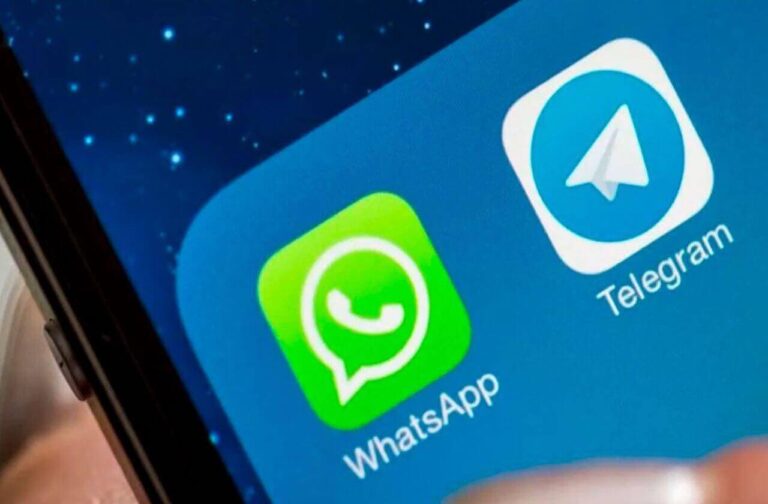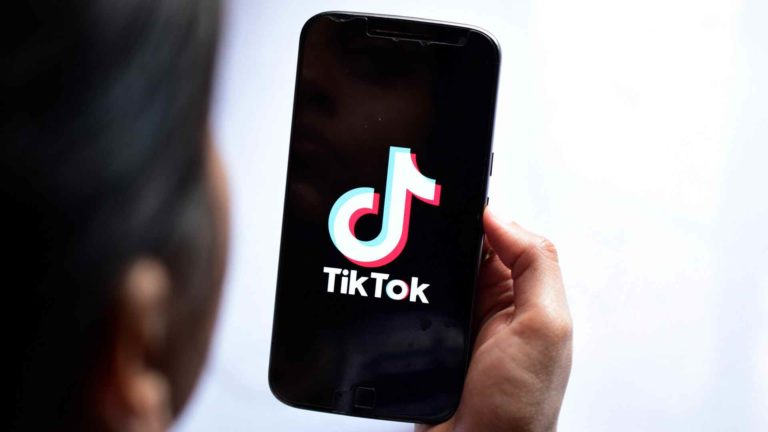Telegram Vs WhatsApp: Which one is better?
Wondering which app to choose between Telegram and WhatsApp? Check out this detailed feature comparison to help you make a better decision.

WhatsApp lost many of its users this year, and they have themselves to blame. While you could originally opt-out of the chat company’s data-sharing, they made it mandatory in a January 2021 Privacy Policy update, prompting users to flee.
Telegram is one of those chat apps that enjoyed the WhatsApp user migration. The company witnessed a surge in its app downloads in January 2021. And finally crossed the 1-billion downloads threshold in August 2021.
These two platforms offer similar features, though they do so in slightly different ways. Finding out which one is best for you, therefore, will require that you compare their many features. This post makes these WhatsApp vs Telegram comparisons below.
Telegram vs WhatsApp Feature Comparison
| Telegram | ||
|---|---|---|
| User base: | 500 million+ monthly users | ~2 billion monthly users |
| Initial release: | August 2013 | January 2009 |
| Founders: | Nikolai & Pavel Durov | Brian Acton & Jan Koum |
| Owner: | Pavel & Nikolai Durov | |
| Source code: | Open source | Proprietary |
| Supported Platforms: | Mac, Linux, Mobile, web etc | Mobile |
| File Sharing: | 2 GB Max. | 100 MB Max. |
| Voice / Video calls: | 30 users, 1,000 watchers | 8 users |
| Voice chats: | Yes | No |
| Group size: | 200,000 | 256 |
| Channels: | Yes | No |
| Encryption: | End-to-end | Client-to-server |
| Security: | Better | Okay |
| Vanishing Messages: | Yes | Yes |
| Delivery Notification: | Yes | Yes |
| Website: | telegram.org | whatsapp.com |
1. User Base
Although there are no exact figures from both companies at the moment, WhatsApp seems to remain the most popular platform. It had about 2 billion monthly users as of February 2020, against Telegram’s 500 million+ monthly active users, as of January 2021.
With WhatsApp’s Privacy Policy update of January 2021, which tried to force users to accept the company’s data-sharing policies, users left the platform in droves, with many migrating to Telegram.
It is difficult, however, to know the exact changes in user base on the two platforms. But WhatsApp’s U-turn on the proposed policies and the addition of new features shows there was a significant drop in its user base since January 2021.
2. Initial Release
WhatsApp came to life in January 2009 and was named by co-founder Jan Koum to sound like “What’s up?”. The original idea was to have a mobile phone app, which displayed the statuses of a phone user’s contacts. And with Apple’s introduction of push notifications in June 2009, WhatsApp 2.0 came with chat and notifications features that gave the app its first commercial boost.
Telegram came four years later in August 2013. The app’s founders had a history of being harassed by the government back in mother Russia. So they set off to create a global messaging app that provides the user with privacy options and other helpful features.
3. Founders
Telegram was founded by Russian brothers Nikolai & Pavel Durov, while WhatsApp was founded by Brian Acton, an American, and Jan Koum, a Ukrainian American born in Kyiv.
4. Owners
WhatsApp is currently owned by Facebook, Inc. after the February 2014 acquisition for $19 billion. Co-founder Brian Acton left WhatsApp three years later in September 2017 to found the Signal Foundation and the Signal messaging app. His co-founder Jan Koum also left WhatsApp and the Facebook board eventually in April 2018.
Both men reportedly left because of disputes with Facebook management. The social networking giant is famous for selling user data or making it available to corporations for a profit. So, privacy-conscious Netizens do not find Facebook cool for that reason.
Telegram remains in the control of its two co-founders and brothers Pavel Durov, the CEO, and Nikolai Durov. Both men had run a social networking website called VK. And it was allegedly taken over by state-backed actors of the Russian Federation.
Nikolai created the secure protocol that Telegram uses today, while Pavel provided funding to start the operations. Telegram is currently headquartered in London, with an operational center in Dubai.
5. Source code
WhatsApp’s source code is proprietary, while Telegram’s source code is open-source. Software developers will choose Telegram because it offers both a Bot API to build automated Telegram messages and the Telegram API and TDLib for building custom Telegram clients. You can build them entirely from scratch or with third-party libraries.
You might see some WhatsApp-related software, but these are usually reverse-engineered and therefore infringe on the copyrights of the organization. They are also often used in distributing malware to unsuspecting users.
6. Supported Platforms
Here again, Telegram beats WhatsApp. In addition to being available on the web, you can also use Telegram on all popular platforms from Android to iOS, macOS, Windows, and even Linux. Plus, your data syncs automatically across the platforms because it is stored in the cloud.
With WhatsApp, it is a different story. While there are web and desktop versions, you cannot run these other versions without having the smartphone app active and connected. WhatsApp stores your data on your mobile device.
7. File Sharing
You can send documents up to 100 MB on WhatsApp. Telegram, on the other hand, lets you send unlimited files up to 2 GB each. And since Telegram uses cloud storage, it needs less than 100 MB of storage space on your mobile device to work.
8. Voice / Video calls
Both platforms offer voice and video calls, all encrypted. However, WhatsApp was a step further with group video calls, as it lets up to 8 users participate at a time.
But Telegram has caught up and even surpassed WhatsApp with group video calls. A Telegram video call now lets up to 30 users broadcast their videos simultaneously to unlimited viewers. This feature is available for both groups and channels and can be a great tool for creative business promoters.
In addition, you can speed up or slow down Telegram videos at 0.5x and 2.0x speeds. Plus, there are screen sharing with sound, higher resolutions, expanded videos, and timestamps, so users can jump to an exact second in the video.
9. Voice chats
Telegram offers voice chats in its groups, which WhatsApp does not yet offer. With Telegram voice chats, the group admin has to first turn it on to turn the group into a voice chat room as you get on Clubhouse.
There are many uses for such a feature. Groups could use it for a lounge or other social purposes. While work teams could find more commercial uses like virtual office space, meetings, and so on.
10. Group size
WhatsApp groups are limited to 256 users maximum. This makes them great for small to medium-sized groups or organizations. But when you pass that threshold, then you should consider Telegram with its 200,000 users group limit. And in addition, Telegram has Channels, which WhatsApp lacks.
11. Channels
A Telegram channel is like a group that has been made public. The contents, discussions, images, and everything else are public. Channels are designed for broadcasting information to the public. And they can have unlimited subscribers.
Only the admin of a Telegram channel can post on it and these are marked with the channel’s name and not that of the user. Such a feature makes it useful for media organizations, celebrities, and other publishers that need to stay in touch with fans and readers.
You can also share a wide range of media on channels, not just text. It lets you share photos, albums, auto-play videos, and podcasts. It also lets you conduct polls, start a discussion group, schedule messages, and so much more.
12. Encryption
WhatsApp employs end-to-end encryption to secure chats and calls between two users. End-to-end means the encryption of information happens between the two users’ devices, independent of web servers. This means that not even WhatsApp has access to the information.
While WhatsApp uses the Signal encryption protocol, Telegram uses the MTProto protocol, which was developed by its co-founder Nikolai Durov. Both protocols have their strengths and weaknesses, but what matters is that both of their communications are encrypted.
13. Security
When it comes to overall security, Telegram’s cloud-based architecture poses a problem. To offer higher data limits and unlimited storage, all communications from a Telegram user are stored in the cloud. So, when sharing information with a friend or family member, that user also has to connect securely to Telegram to retrieve the cloud-stored data.
This is exactly where the loophole comes in because nobody can guarantee you that Telegram or a third-party hacker will not mess with your data. There are many advantages to cloud storage but guaranteed security for your data is not one of them.
So if data security is important to you, then you can use Telegram’s secret-chat feature, as it uses end-to-end encryption between the two devices and with no one in-between just like WhatsApp does. Or you can simply turn to Signal, the instant messaging app with the best ratings for security and privacy protection.
14. Vanishing Messages
WhatsApp has a disappearing message mode, which deletes all messages in a chat after seven days. All you need to do is enable it by tapping on your contact’s name and tapping on ‘disappearing messages’ to either enable or disable it.
On Telegram, you can send disappearing media that will self-destruct after a set period. This can range from 1 day to 1 week, or even one month. Else, you can use the Telegram secret-chat feature and delete the chat later. Keep in mind, however, that a secret chat offers the same security level as a standard WhatsApp chat.
15. Delivery Notification
Both platforms offer multi-stage notifications: 2 on Telegram and 3 on WhatsApp. On Telegram, 1 check means the message is sent to the cloud and the recipient notified. While 2 checks mean the message has been seen.
On WhatsApp, 1 gray check means sent, 2 gray checks mean delivered to the recipient’s phone, and 2 blue checks mean message seen by its recipient. Both platforms also offer options to disable the notifications and to block specific users from sending you messages and getting notified about you.
Conclusion
Coming to the end of this side by side look at the Telegram and WhatsApp instant messaging systems, you have seen their major features and strengths that make them popular.
From message delivery to security, file-sharing features, and programmability, you have seen enough distinct features to help you choose between the two platforms, depending on your needs. So, the choice is yours.



